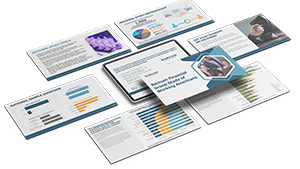
When you think about a financial advisor, do you picture someone just managing investments, or do you see a crucial guide for life’s biggest challenges? Barnum’s Study of Americans in the Workplace reveals that for many, an advisor isn’t only a service provider — they’re seen as a vital partner, even a “hero.”
A striking 70% of respondents said a financial advisor would be a “hero” to them if they could help them understand and better plan for meeting their personal financial goals. It’s not solely about accumulating wealth, but about gaining clarity and control, especially when faced with the unexpected.
Navigating Life’s Unpredictable Turns
One area where “heroic” guidance is needed is around employment transitions. Our study uncovered a misconception: 55% of working Americans mistakenly believe they would have the option to continue their employer-sponsored benefits if they were to unexpectedly lose their job. This gap in understanding can leave individuals incredibly vulnerable during already stressful times.
If unexpectedly separated from their employer, working Americans identified the most helpful strategies an advisor could offer as:
- Creating or reviewing financial plans: Ensuring a solid roadmap exists.
- Best strategies for utilizing savings: How to responsibly tap into funds during a transition.
- Information on how to maintain benefits: Crucial guidance on health, retirement, and other benefit options outside of an employer.
Clients are concerned about stability and continuity, and they look to advisors for practical solutions in moments of crisis.
Everyday Clarity and Protection
Clients also value clear, actionable advice for ongoing financial well-being. Our study found that a notable 31% of individuals don’t know how a financial advisor can help them reach their goals. Financial advisors need to demystify their role and proactively show how they can help with:
- Understanding Fees: 43% of respondents stated that a lack of understanding about fees or costs has actually prevented them from purchasing financial services products. A “heroic” advisor makes this transparent and easy to understand.
- Valuable Products: While many are familiar with banking apps and social media, the study shows the most valuable financial services resources clients actually use are Financial Advisors, Certified Financial Planners, and Tax Preparers. They’re also actively using and valuing products like retirement accounts and real estate investments, as well as essential life insurance and long-term care insurance—all areas where an advisor provides critical expertise.
Ultimately, working with a financial advisor goes beyond managing money; it’s about equipping you with the knowledge and strategy to navigate life’s complexities, protect what you’ve built, and feel confident in your financial journey. They’re there to help you turn uncertainty into a clear, actionable plan.
Ready to find your financial “hero” and build a resilient plan for your future? Contact Barnum Financial Group for a consultation today.



